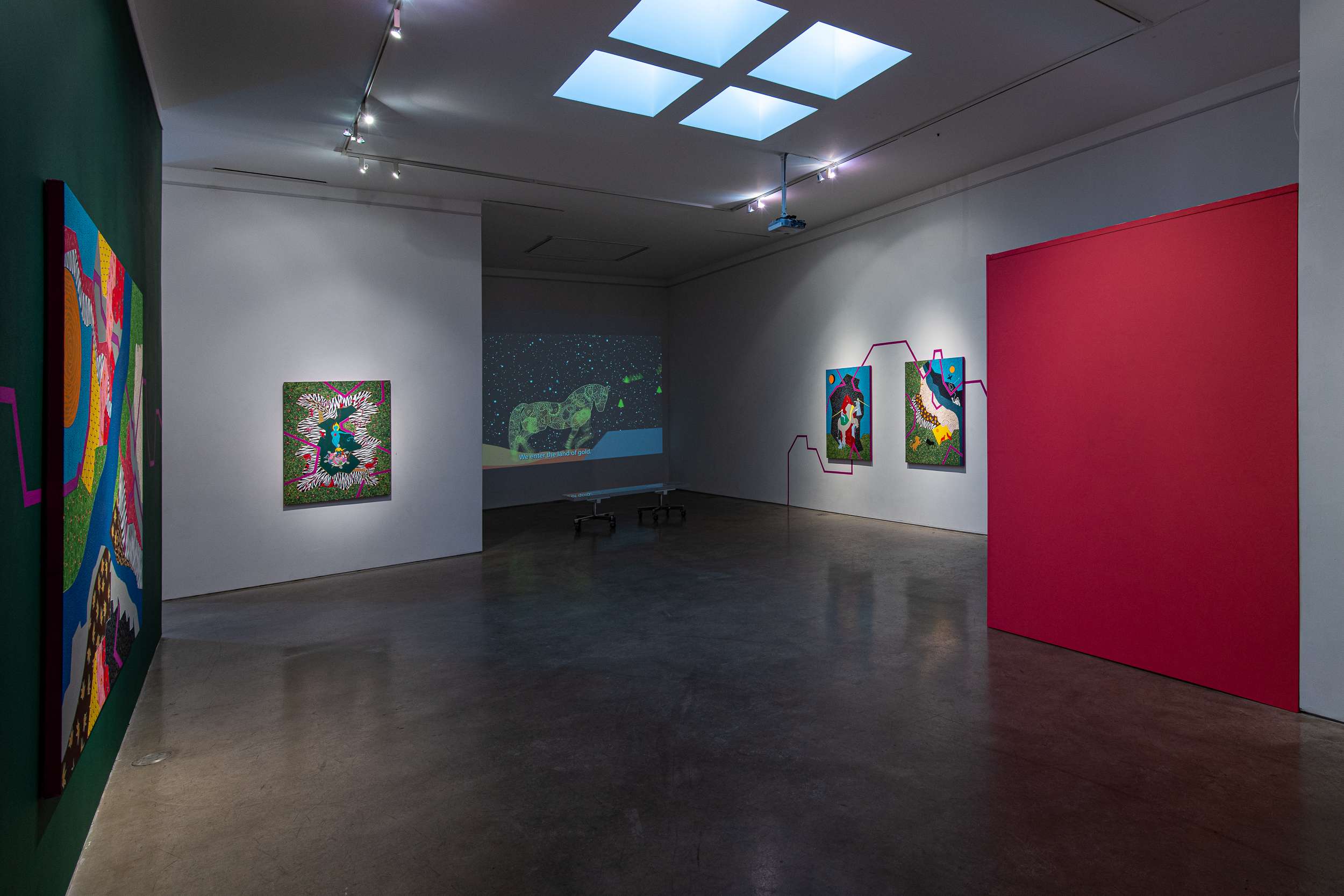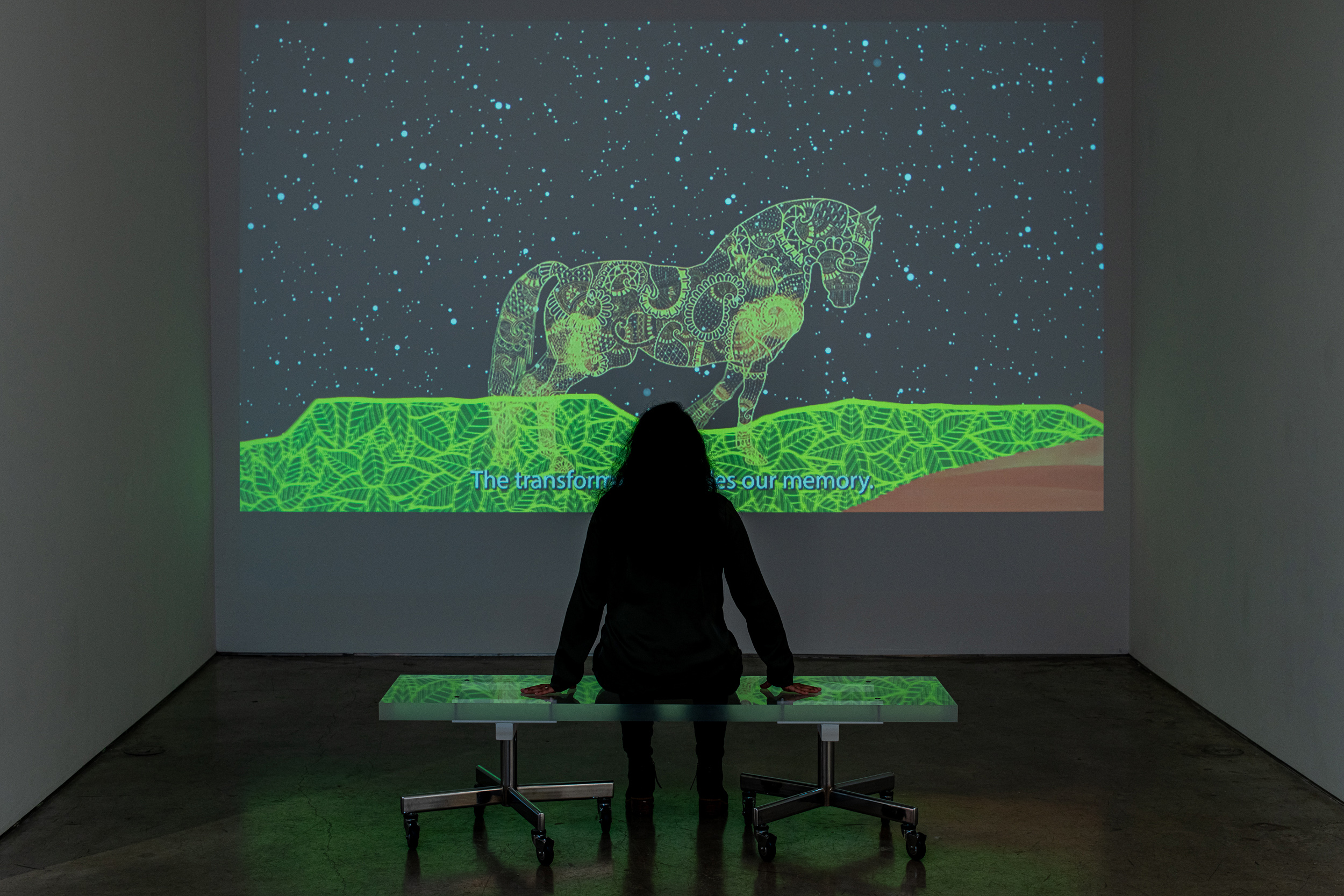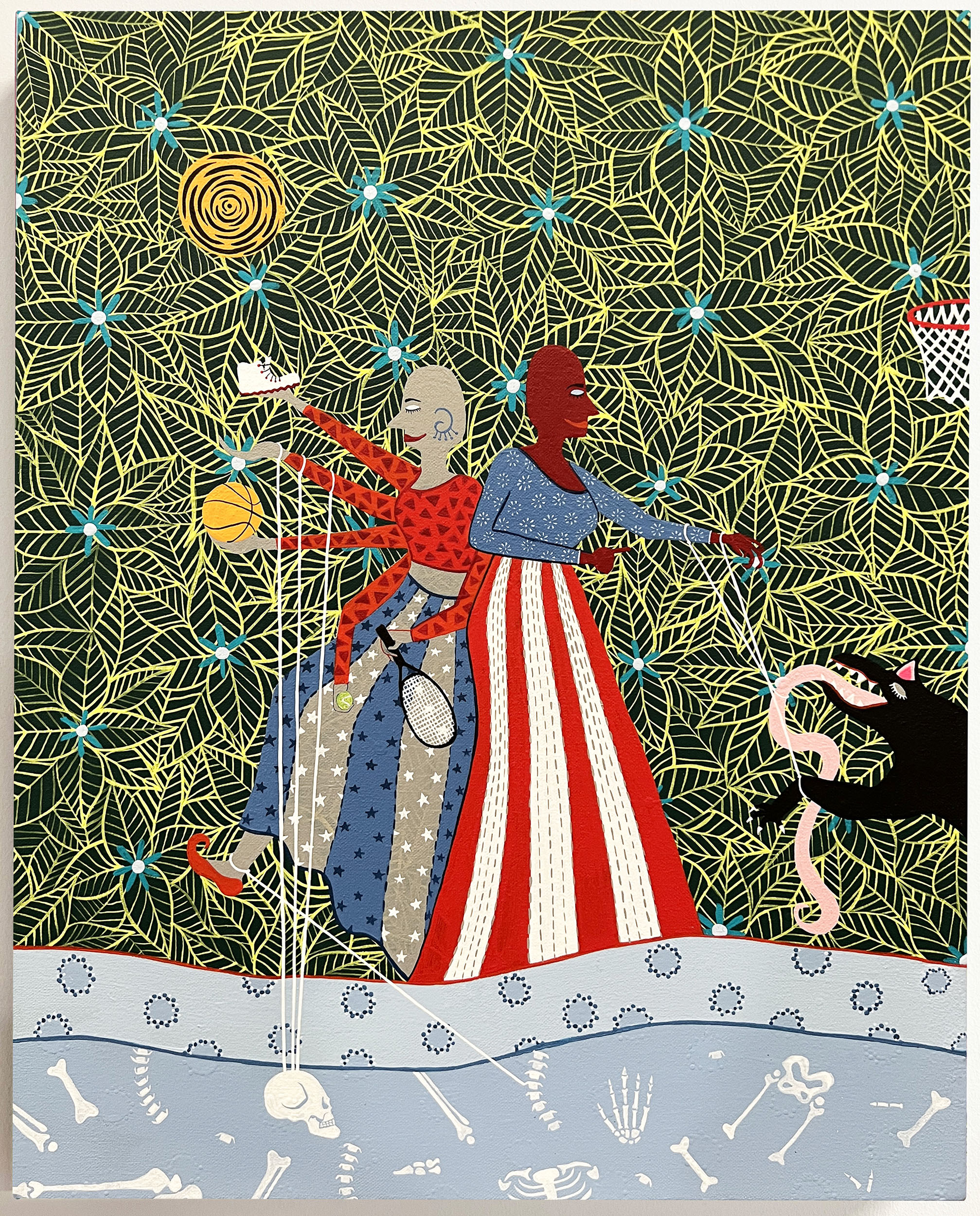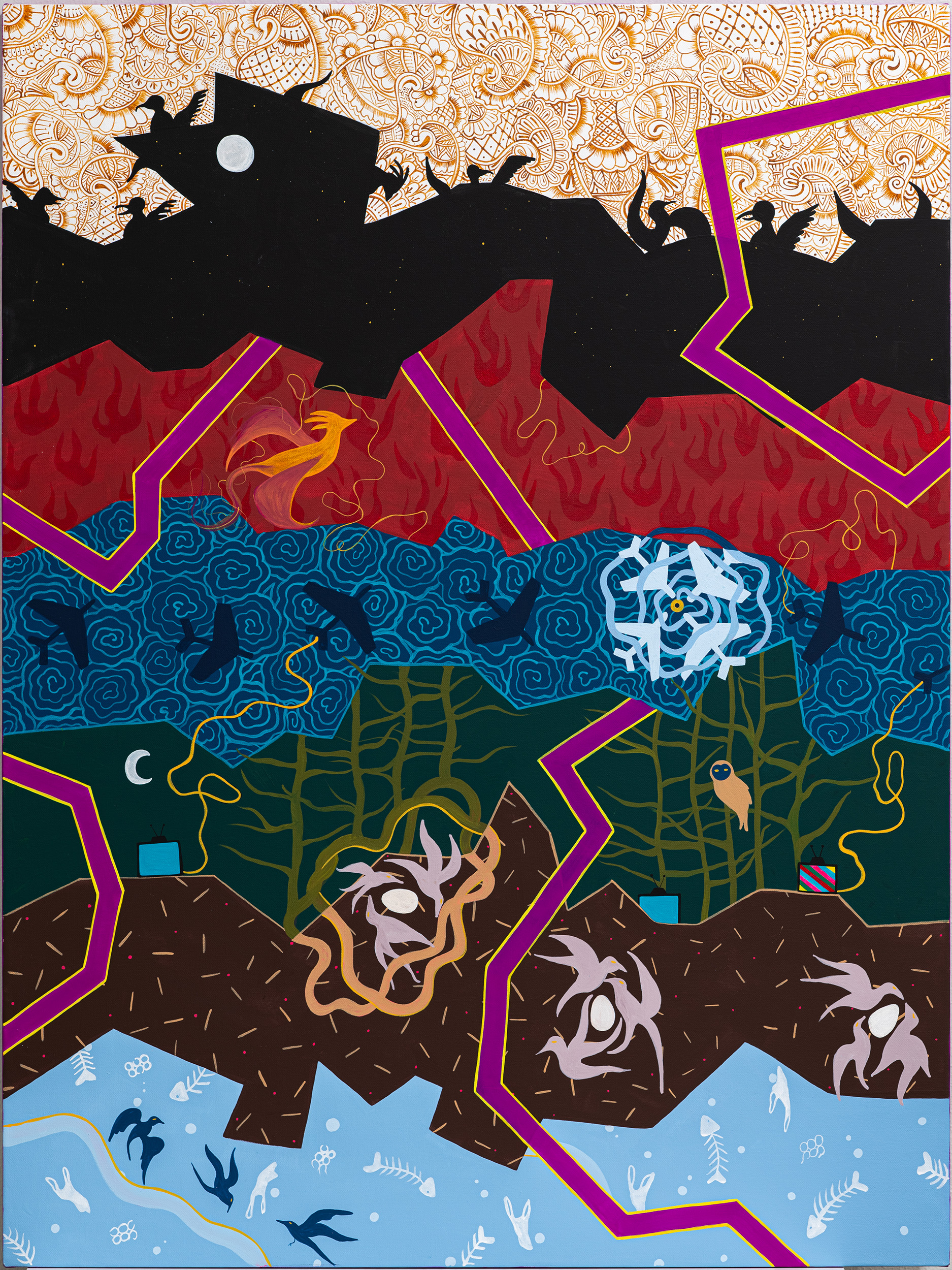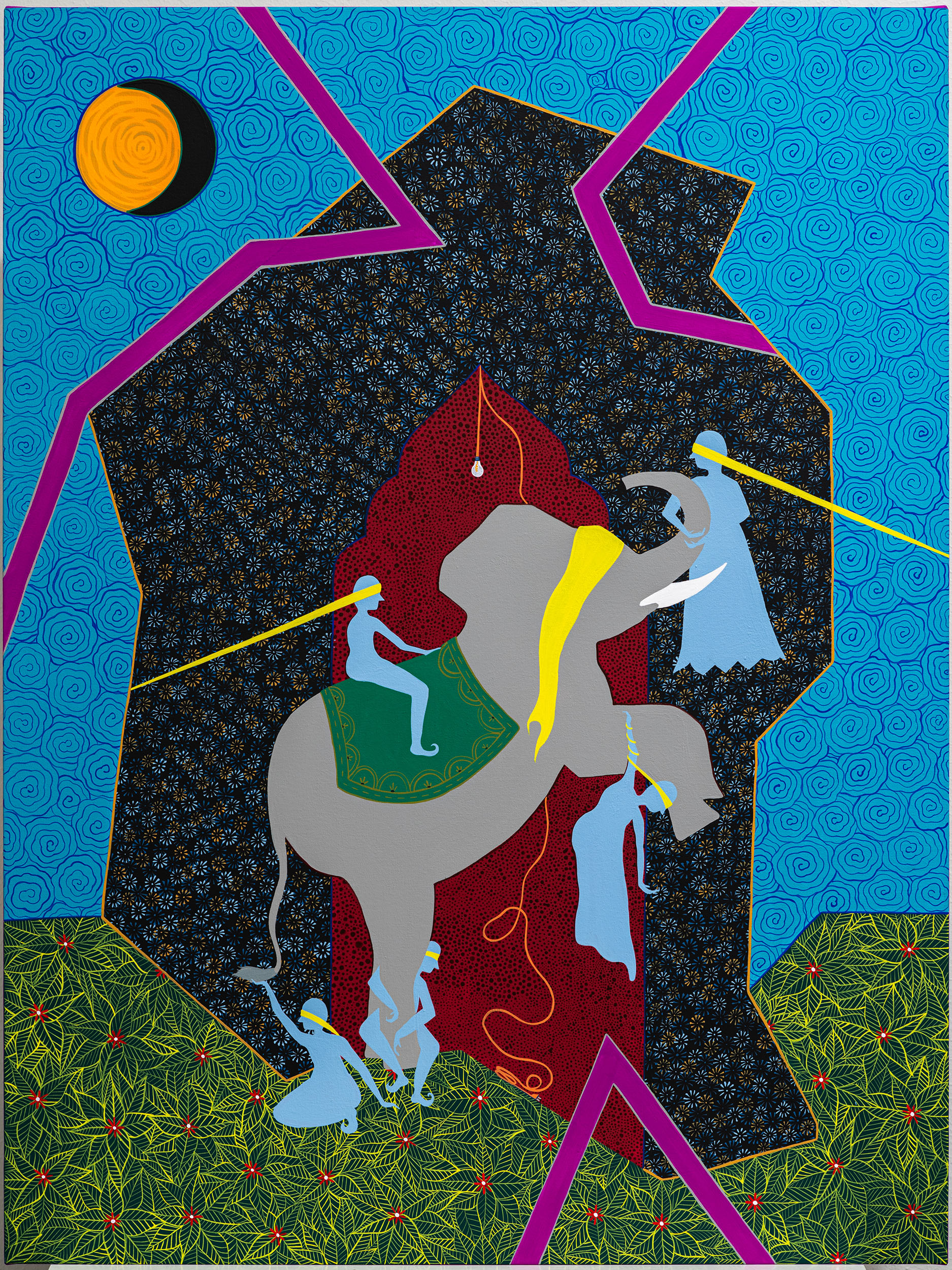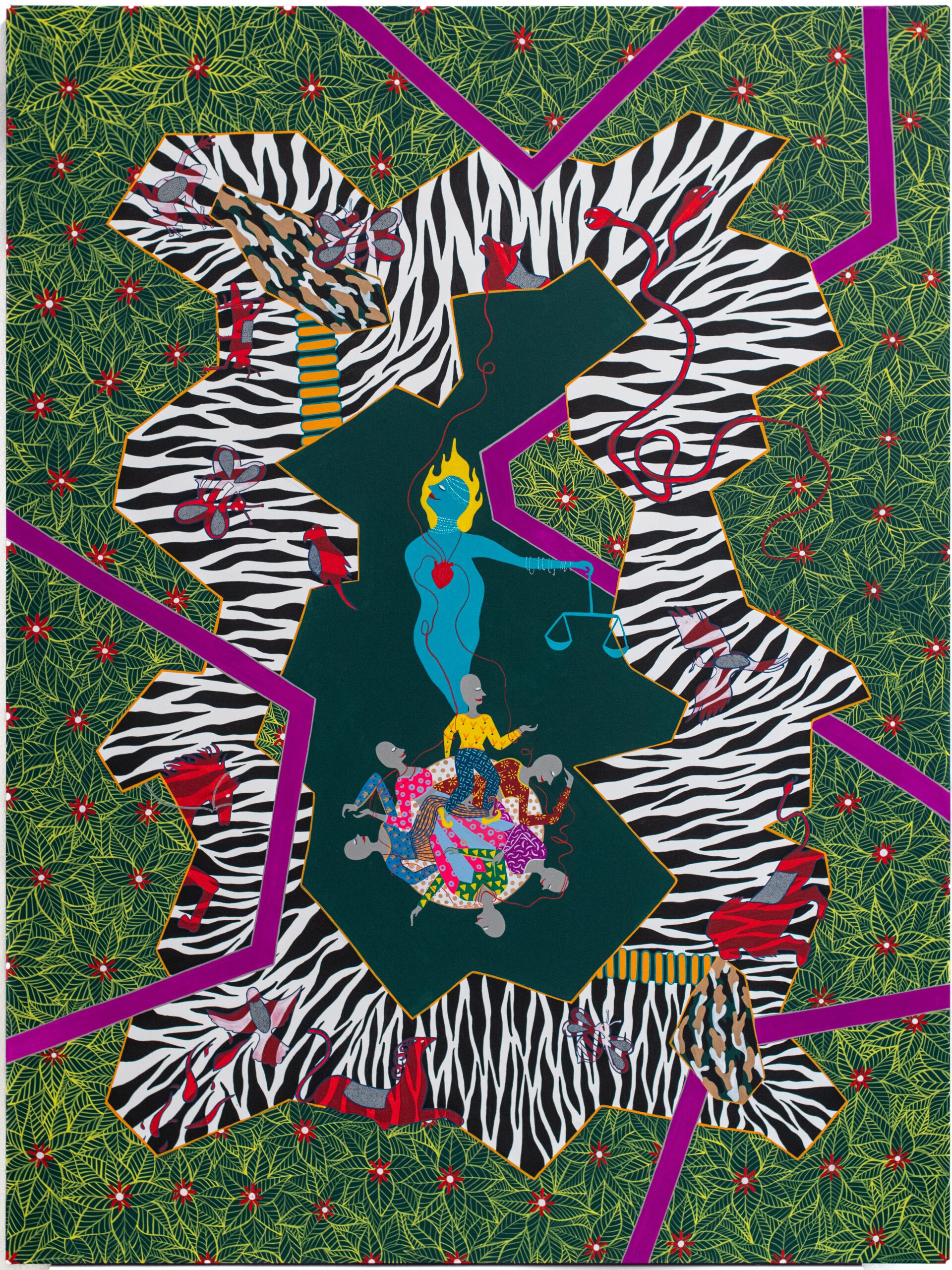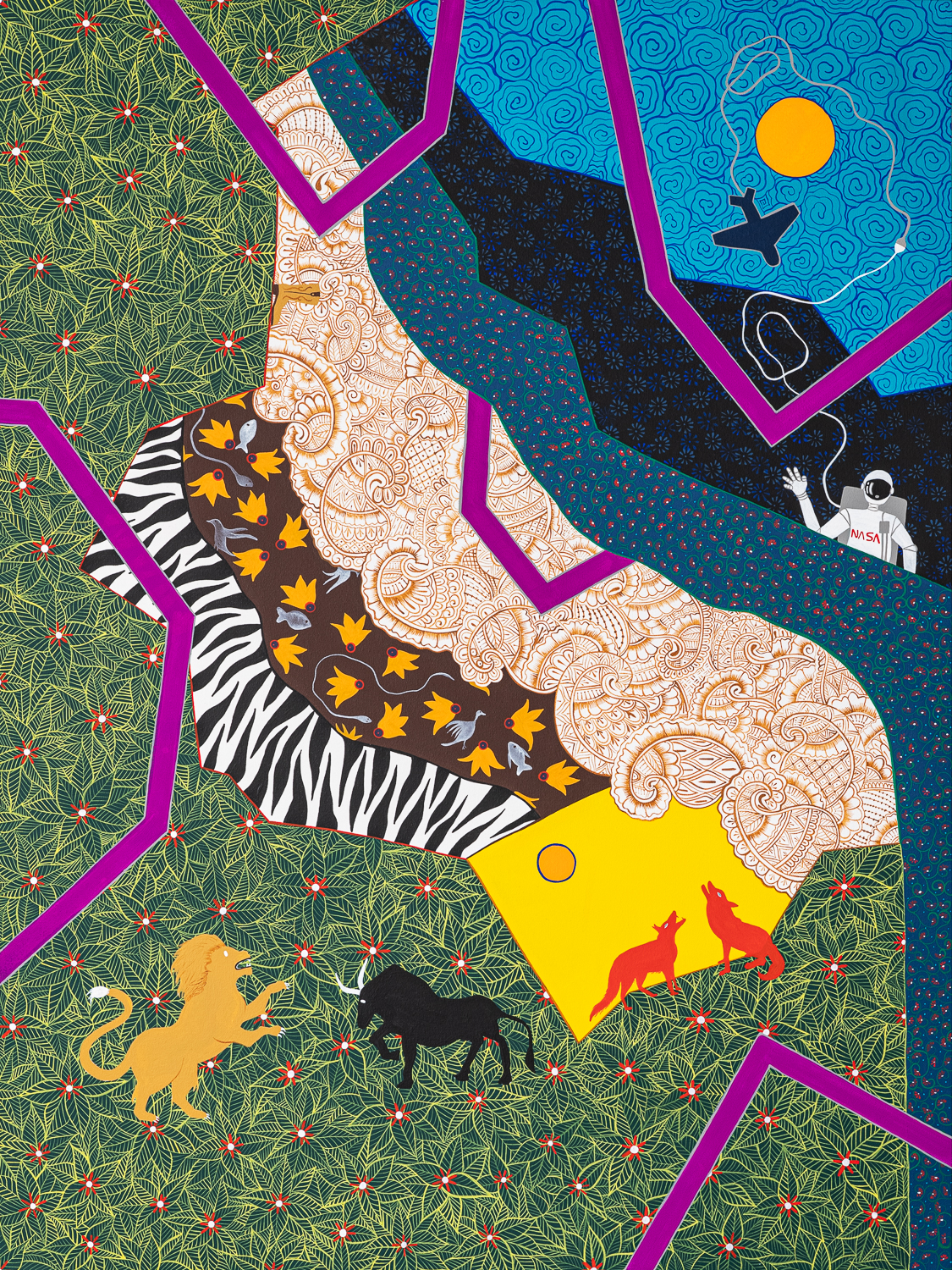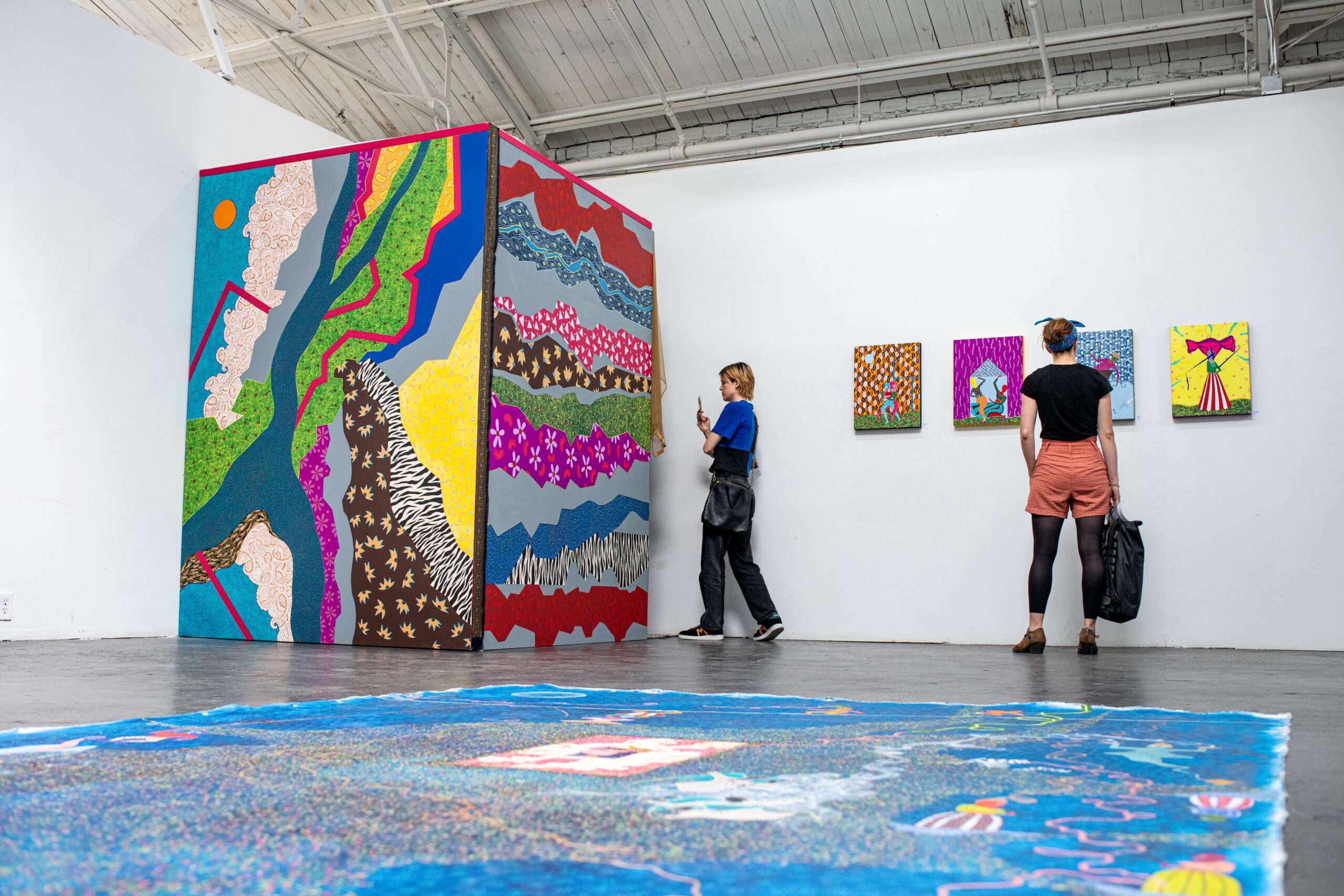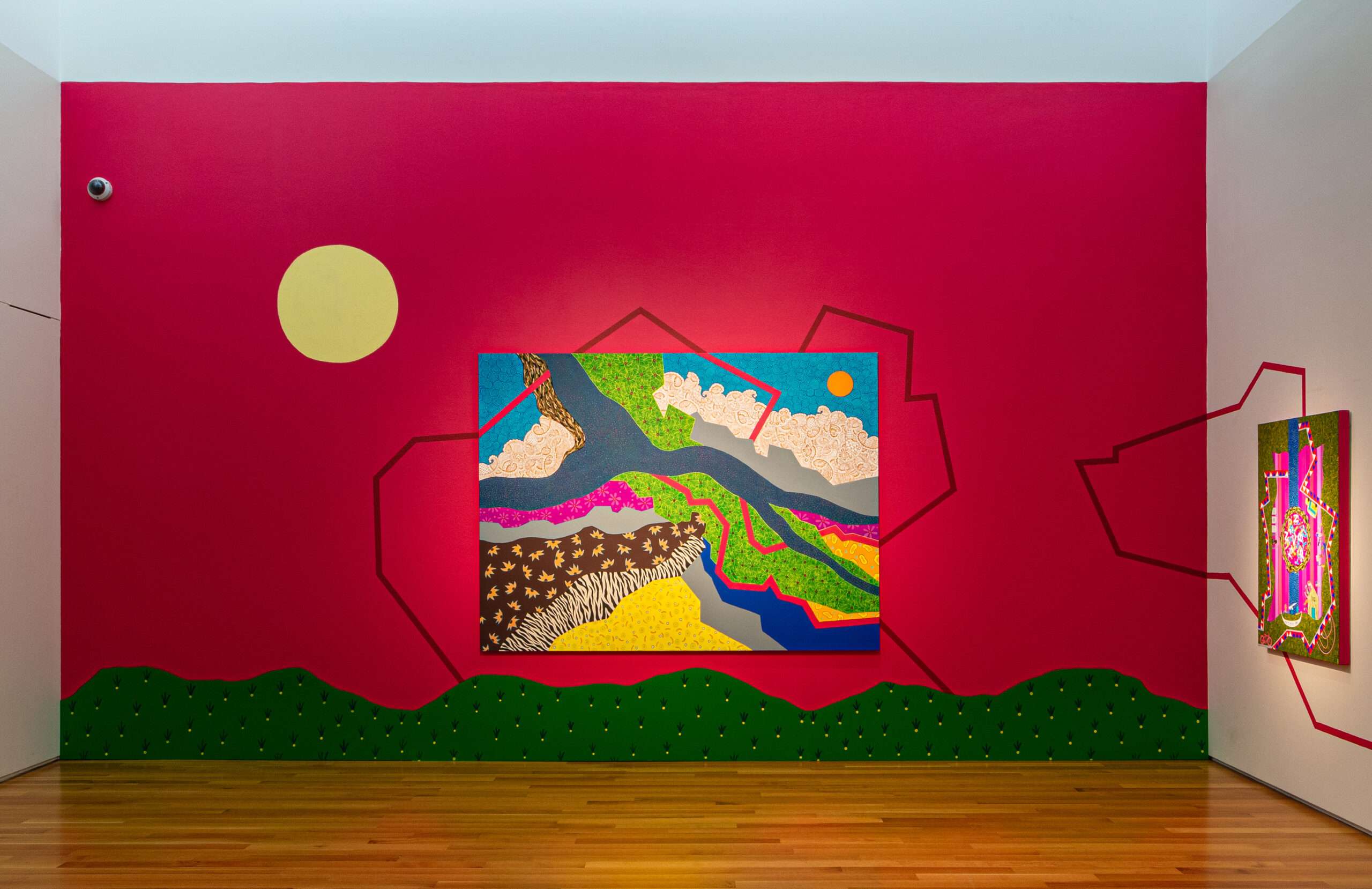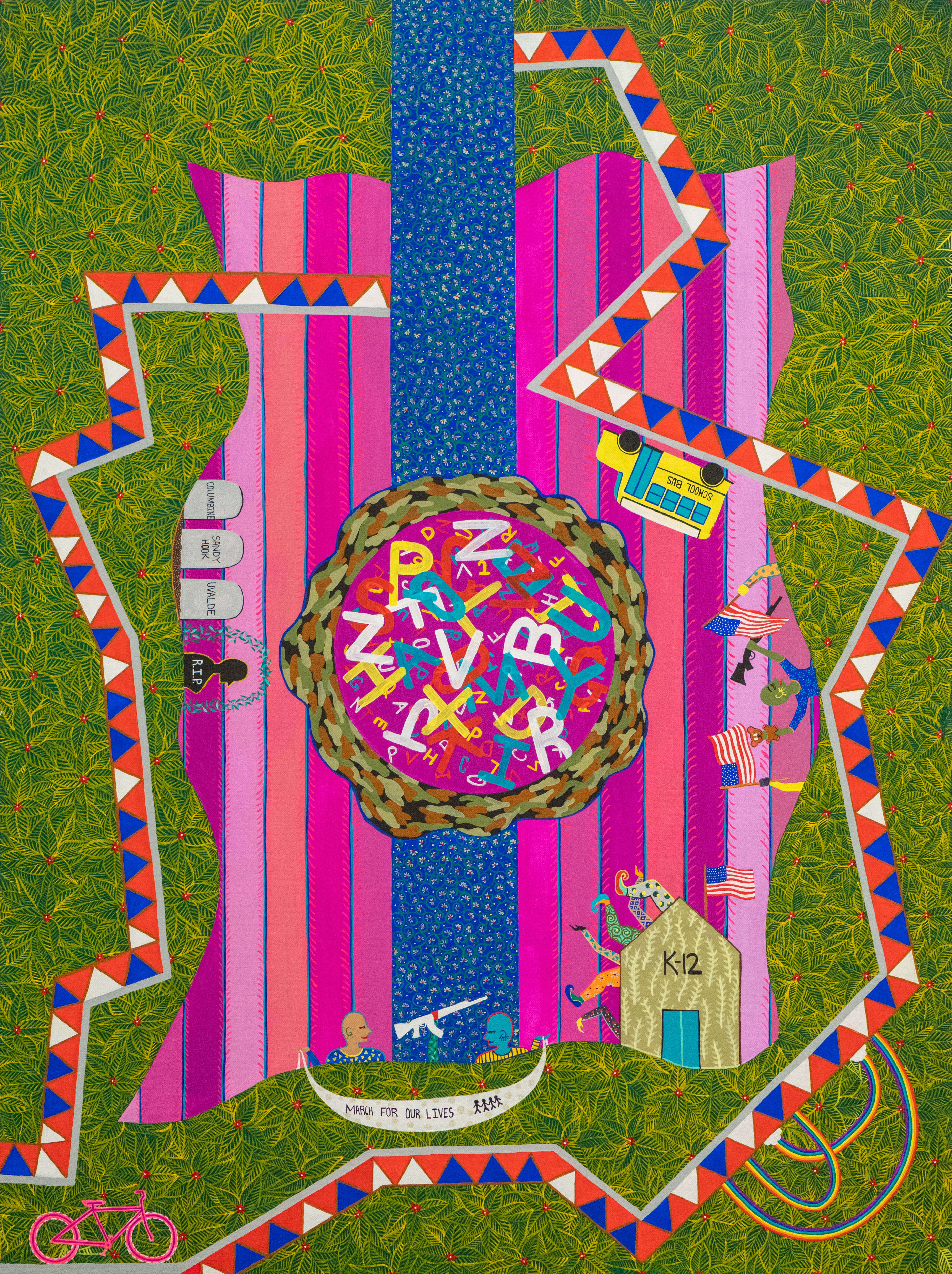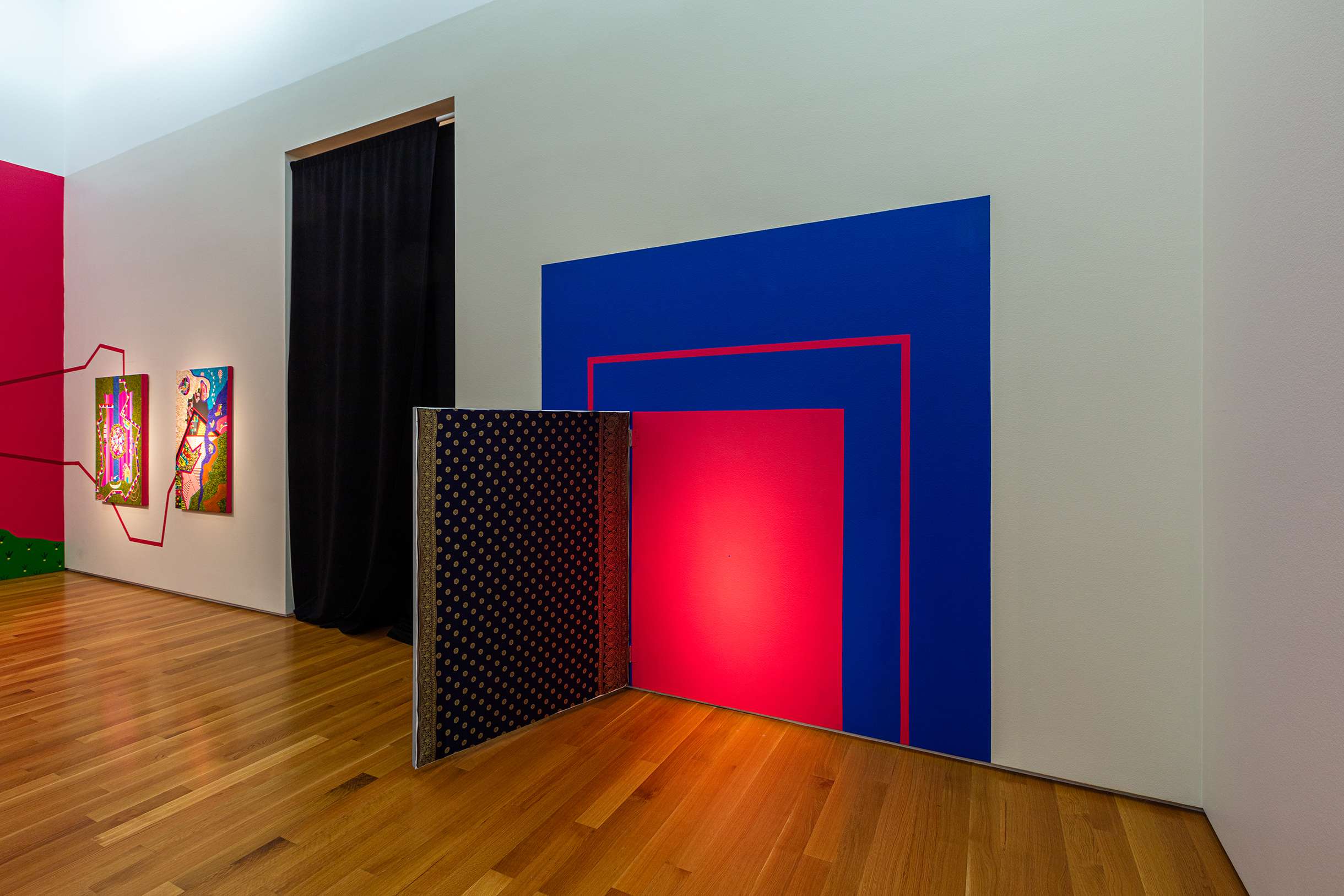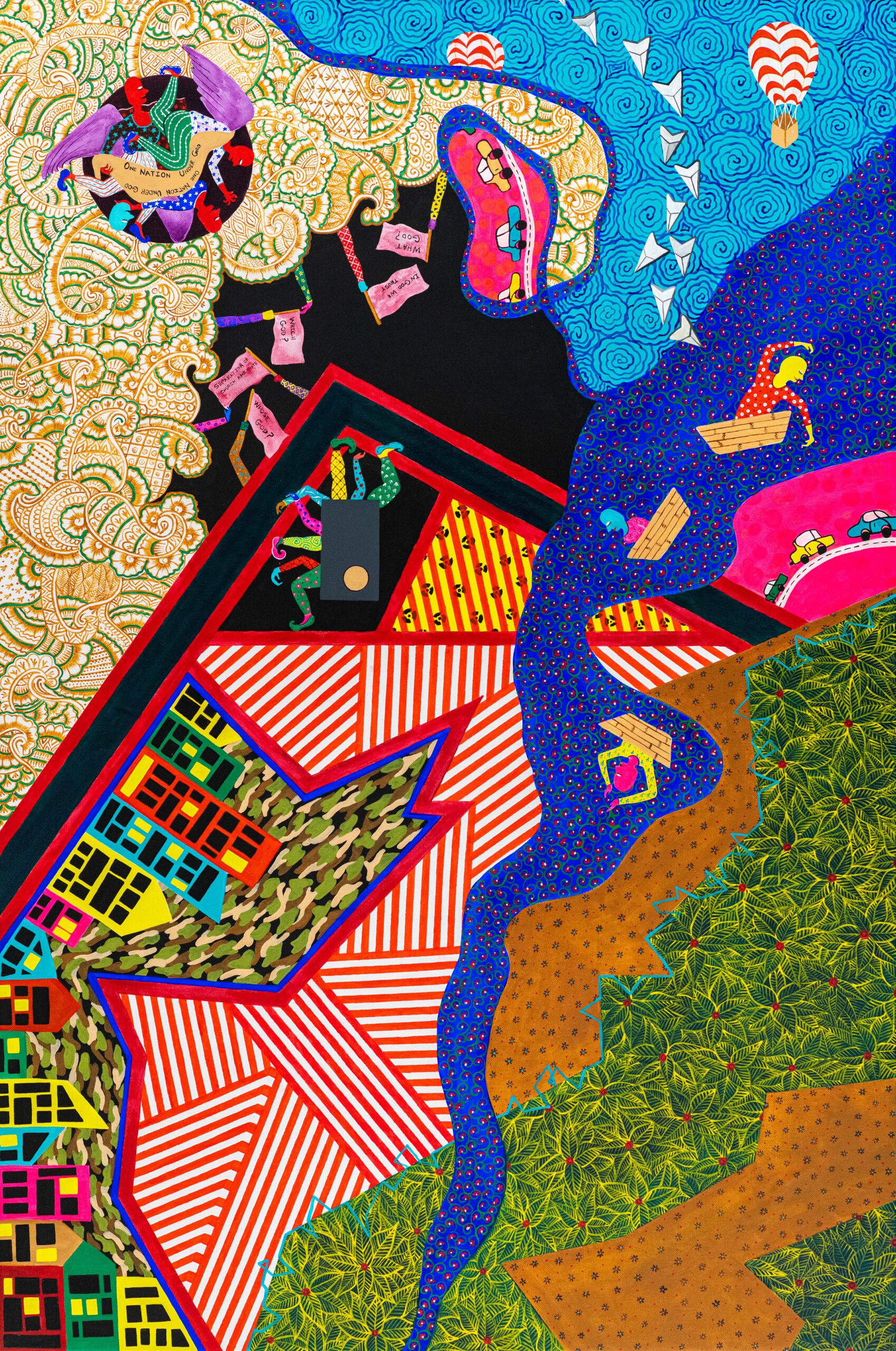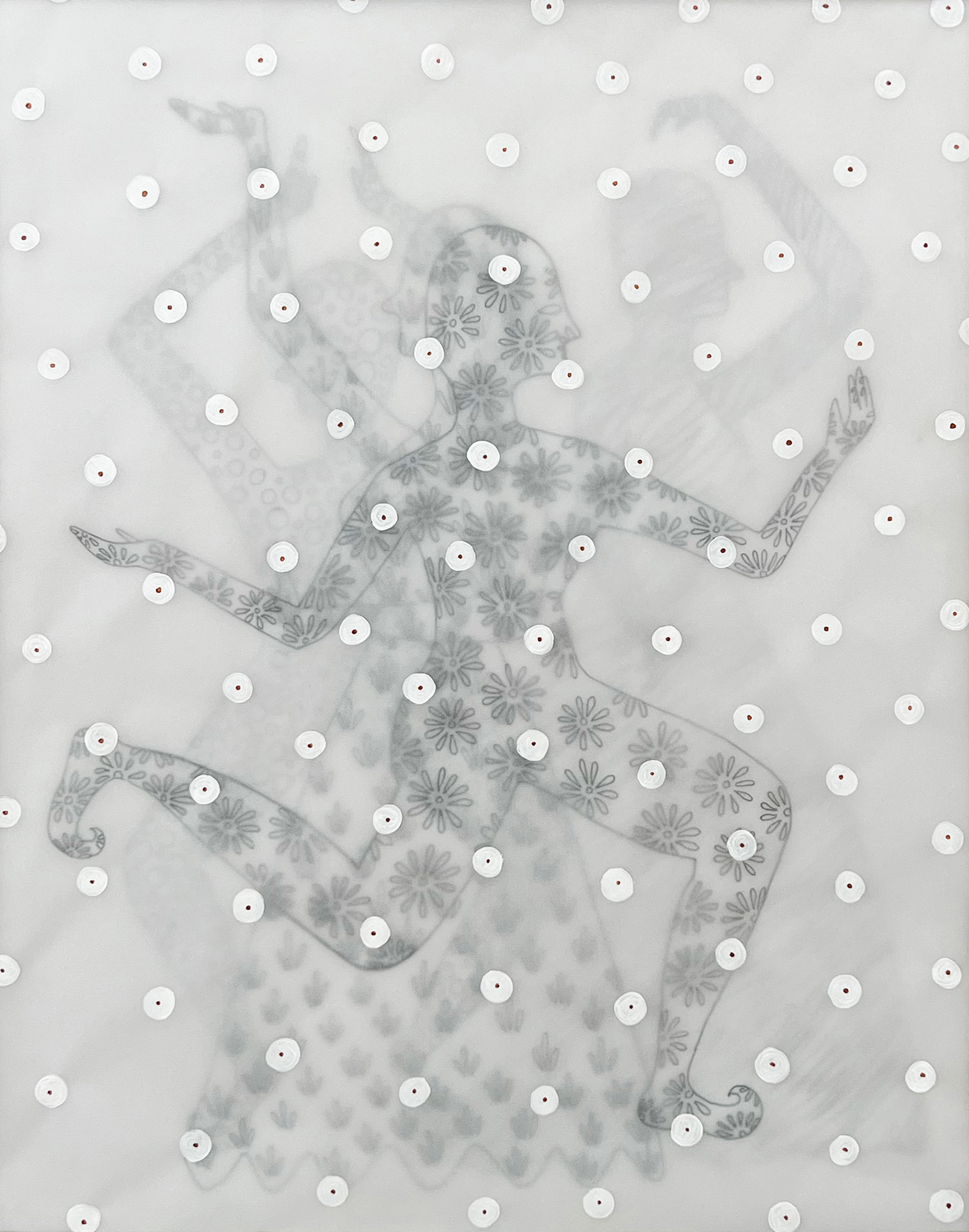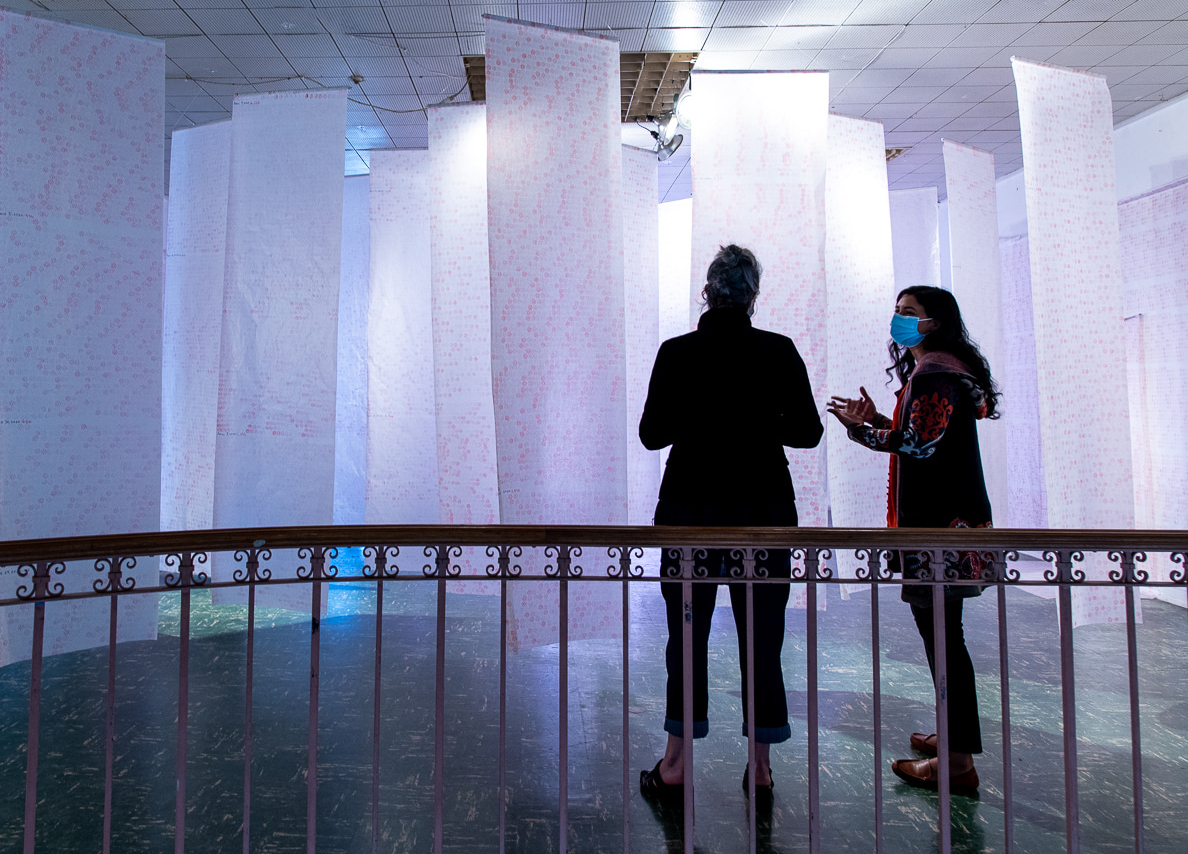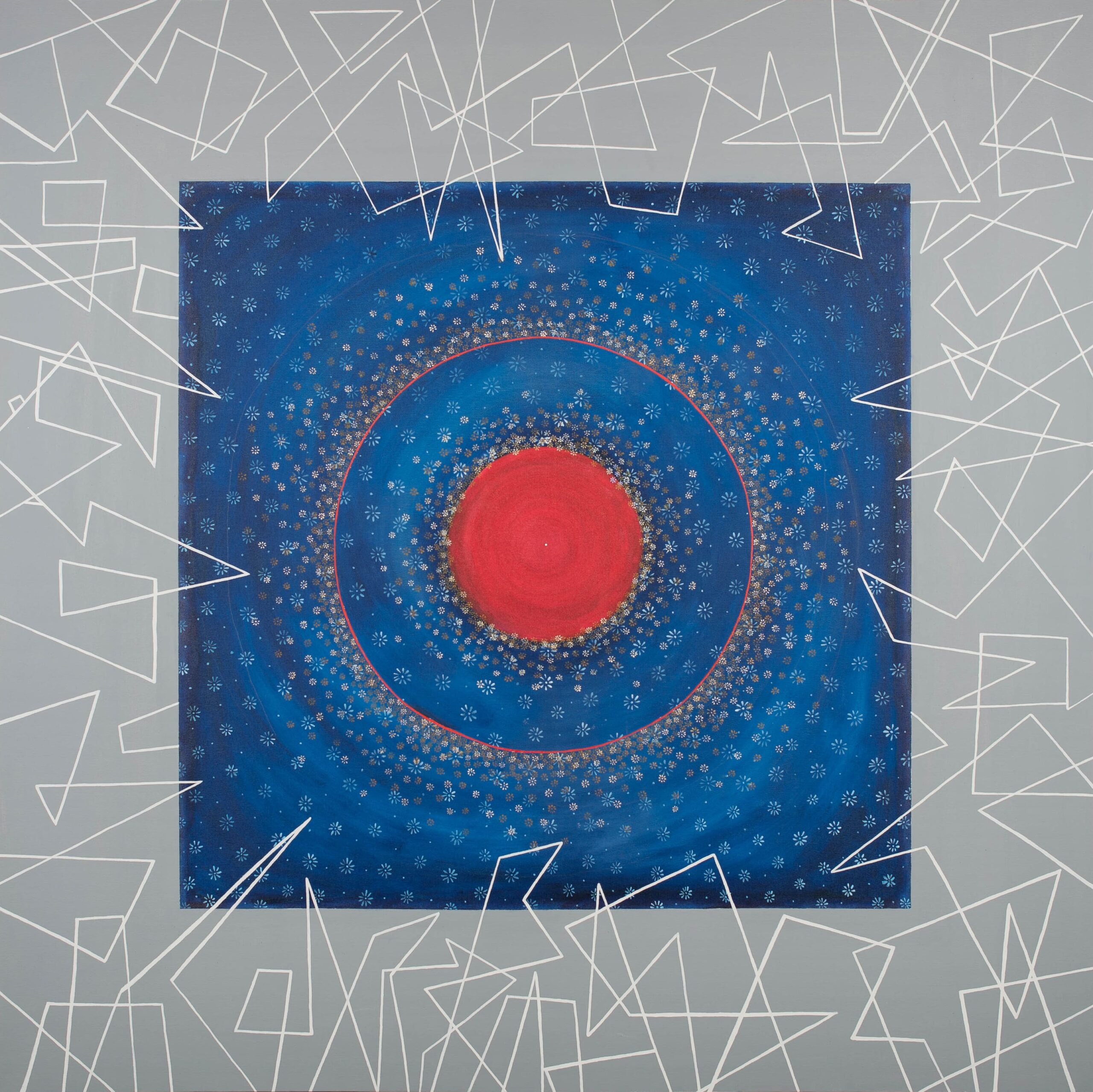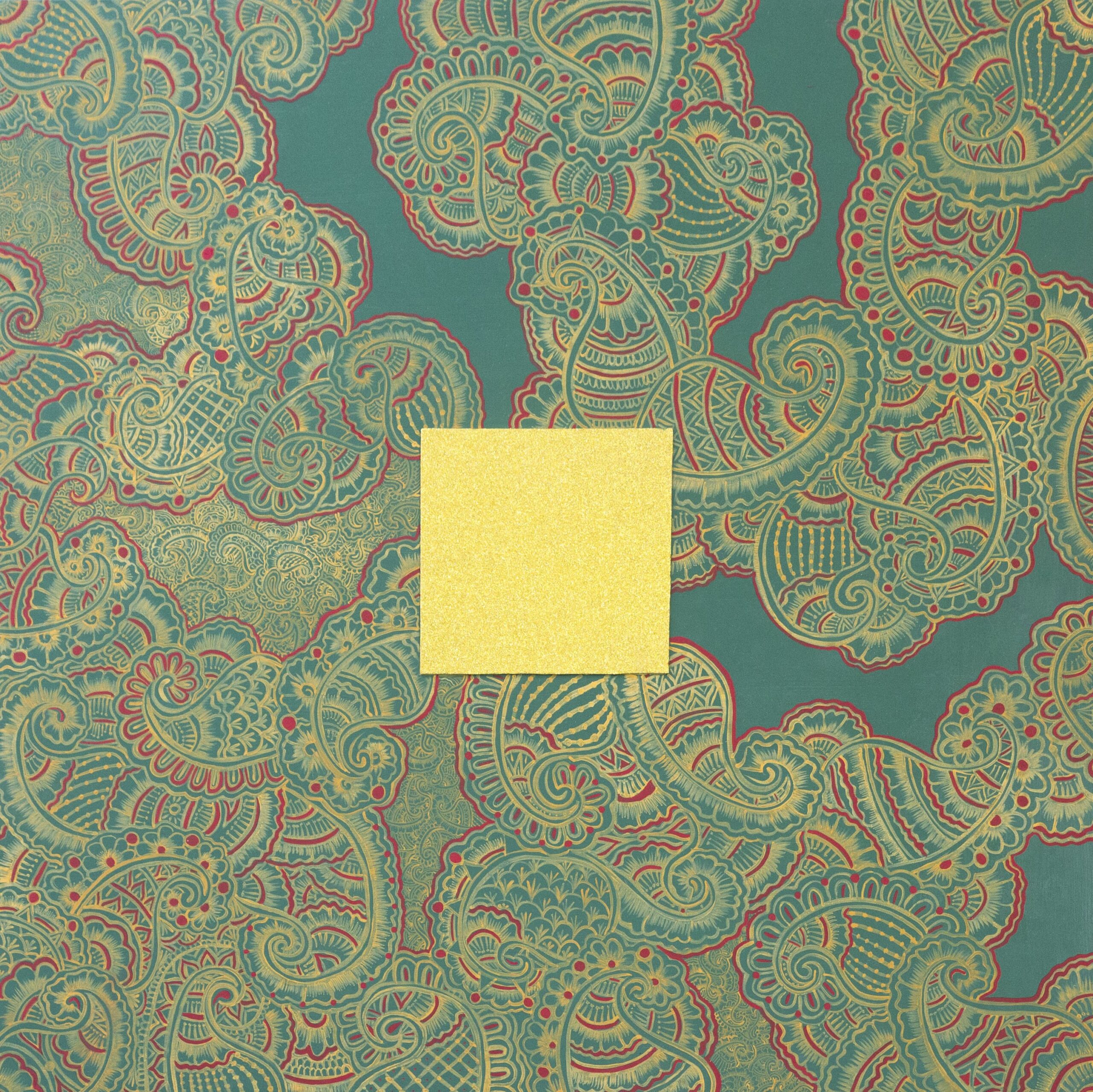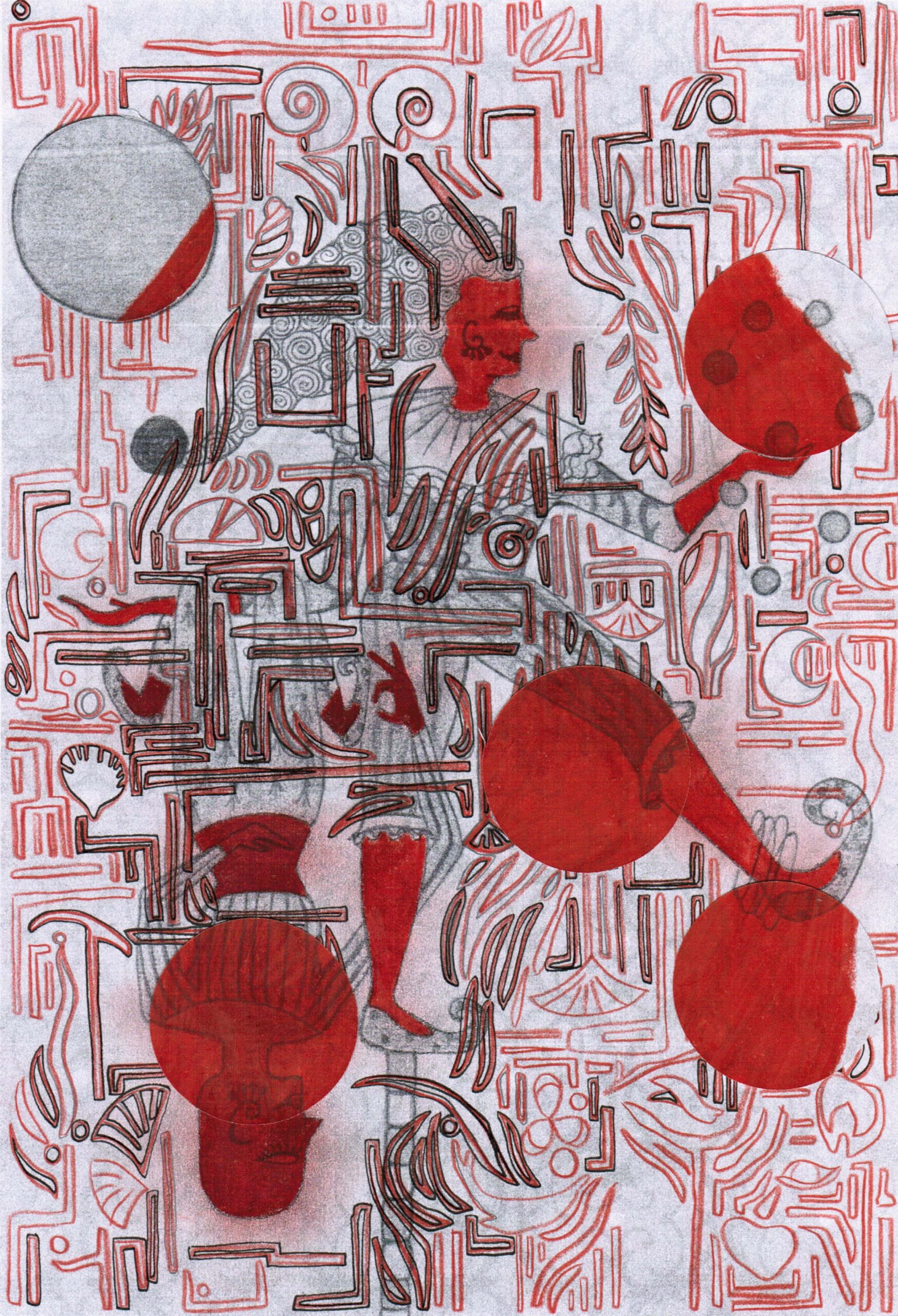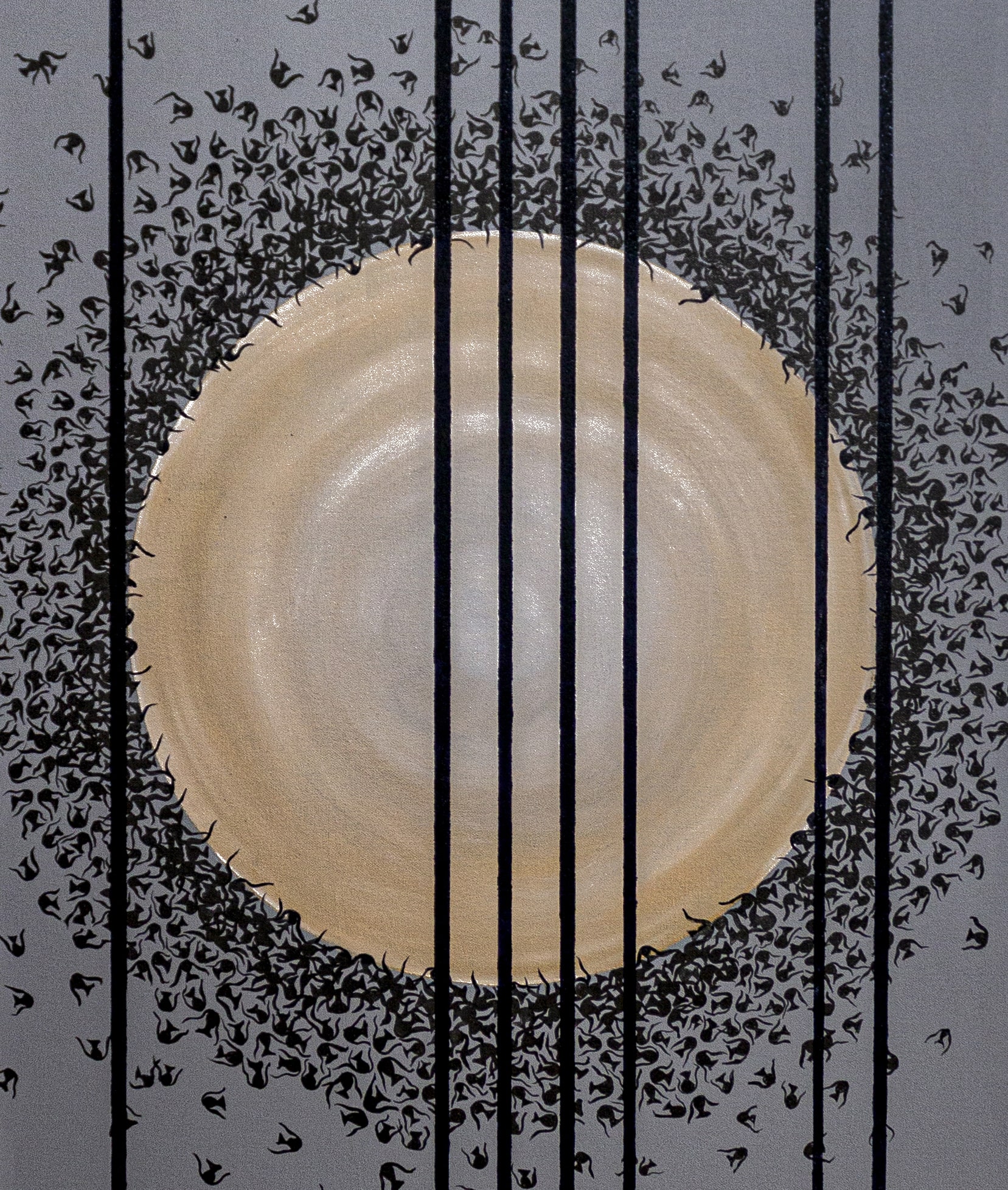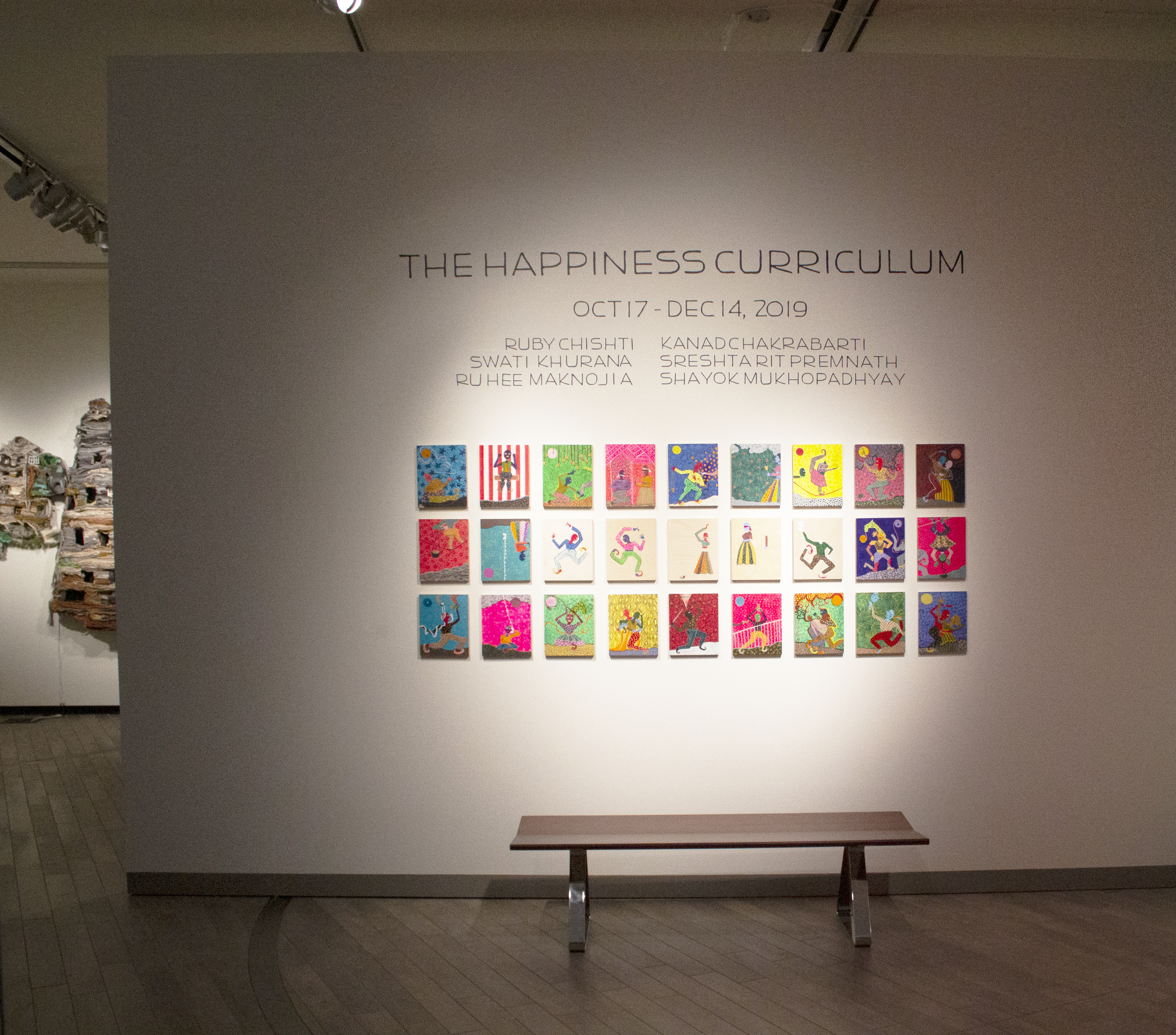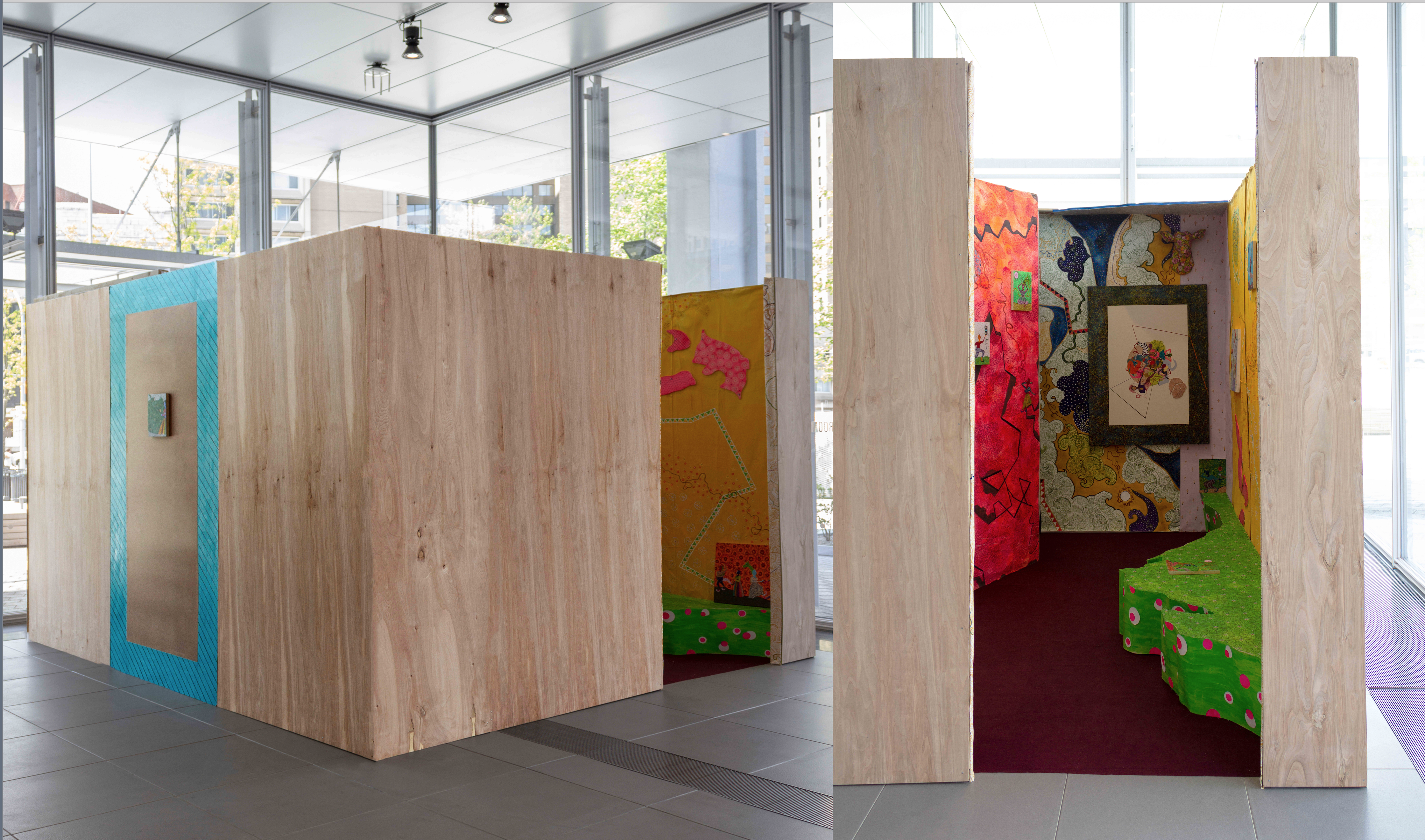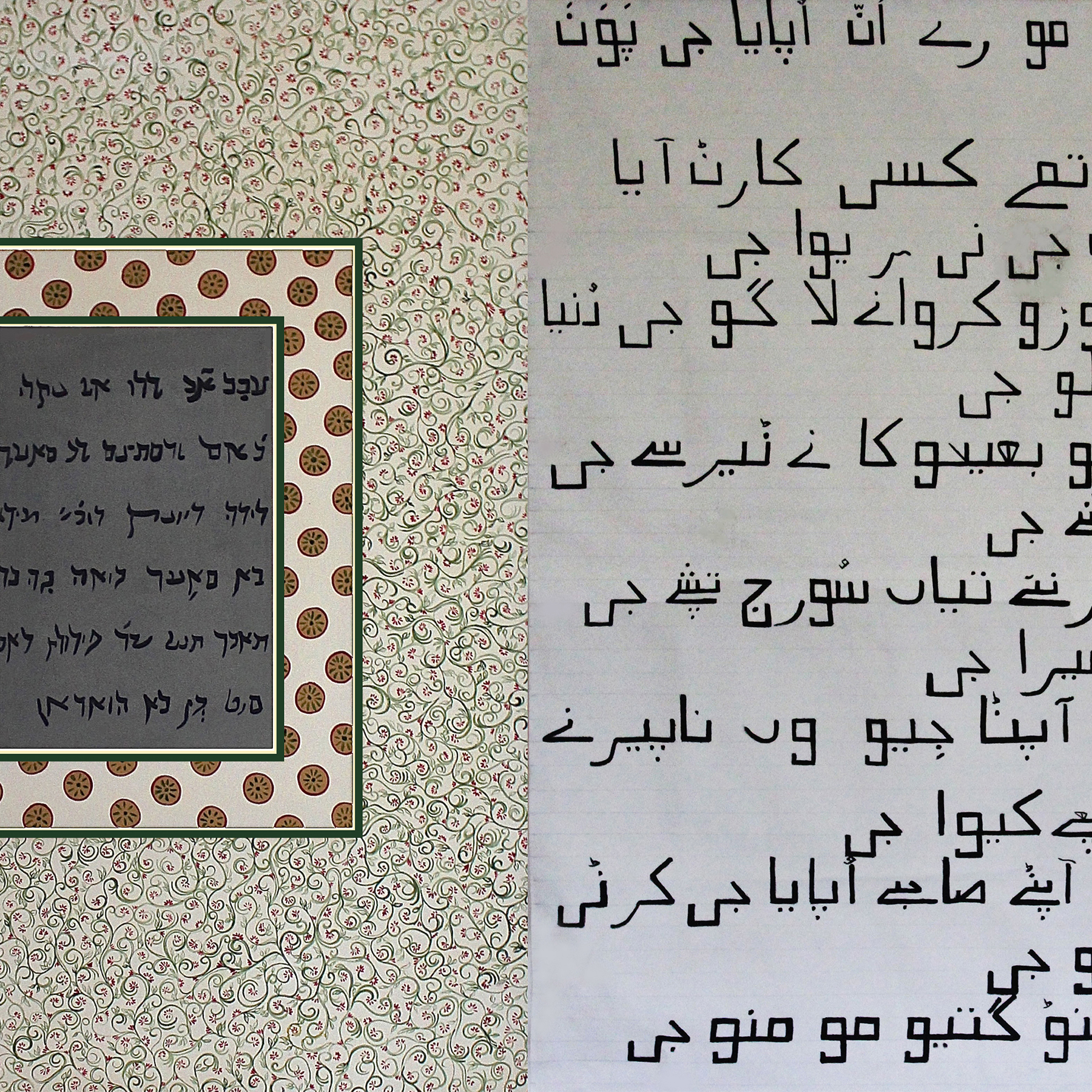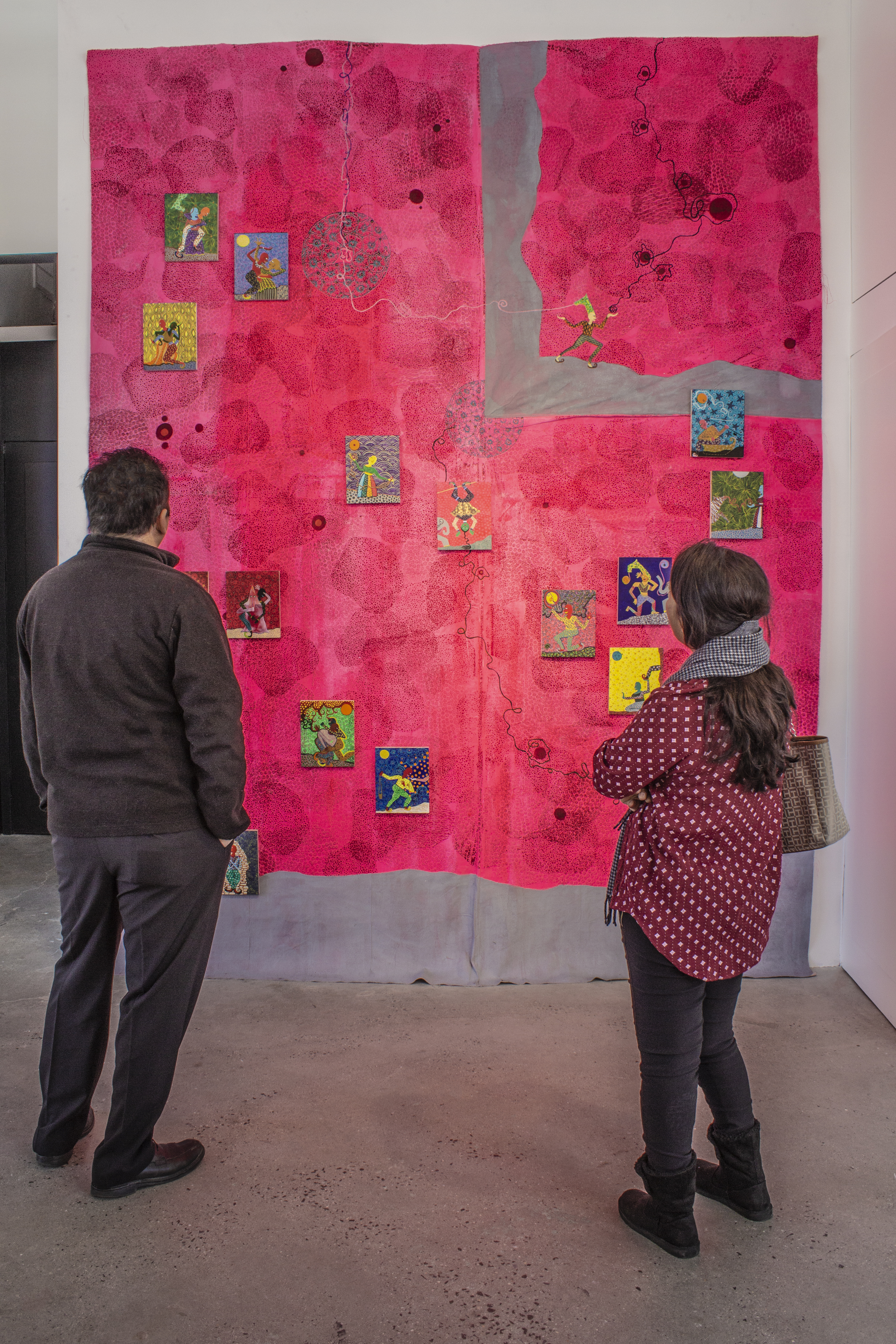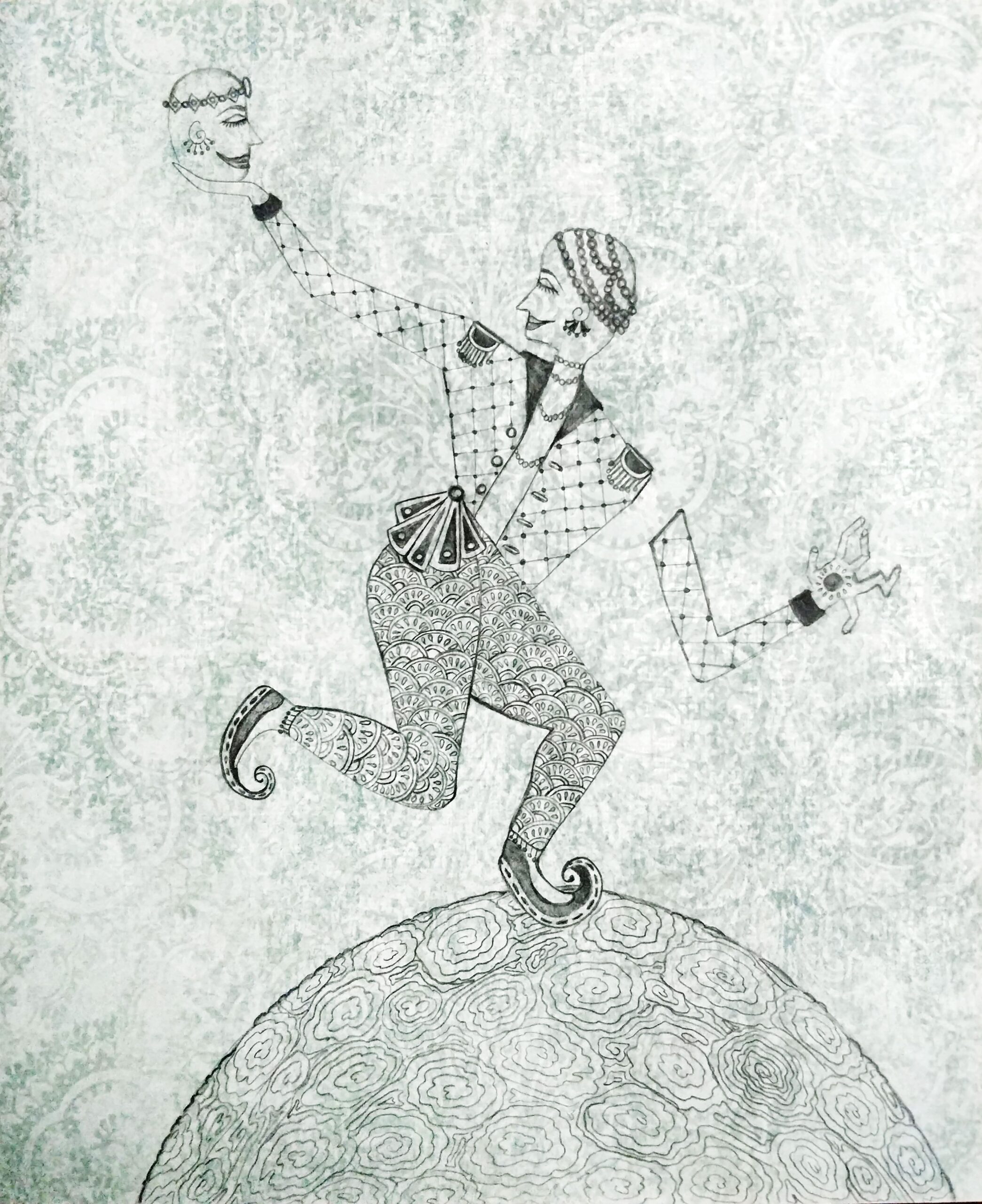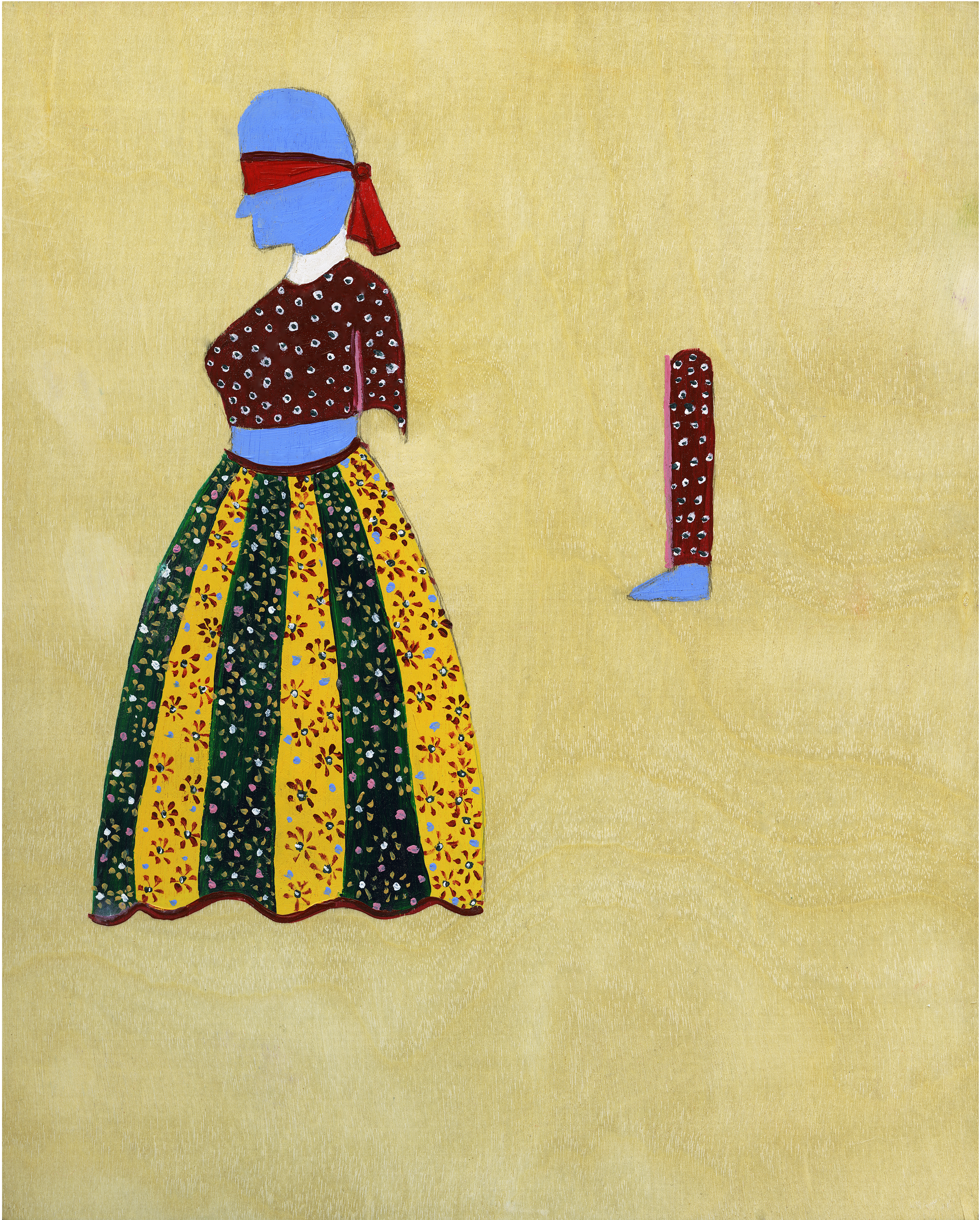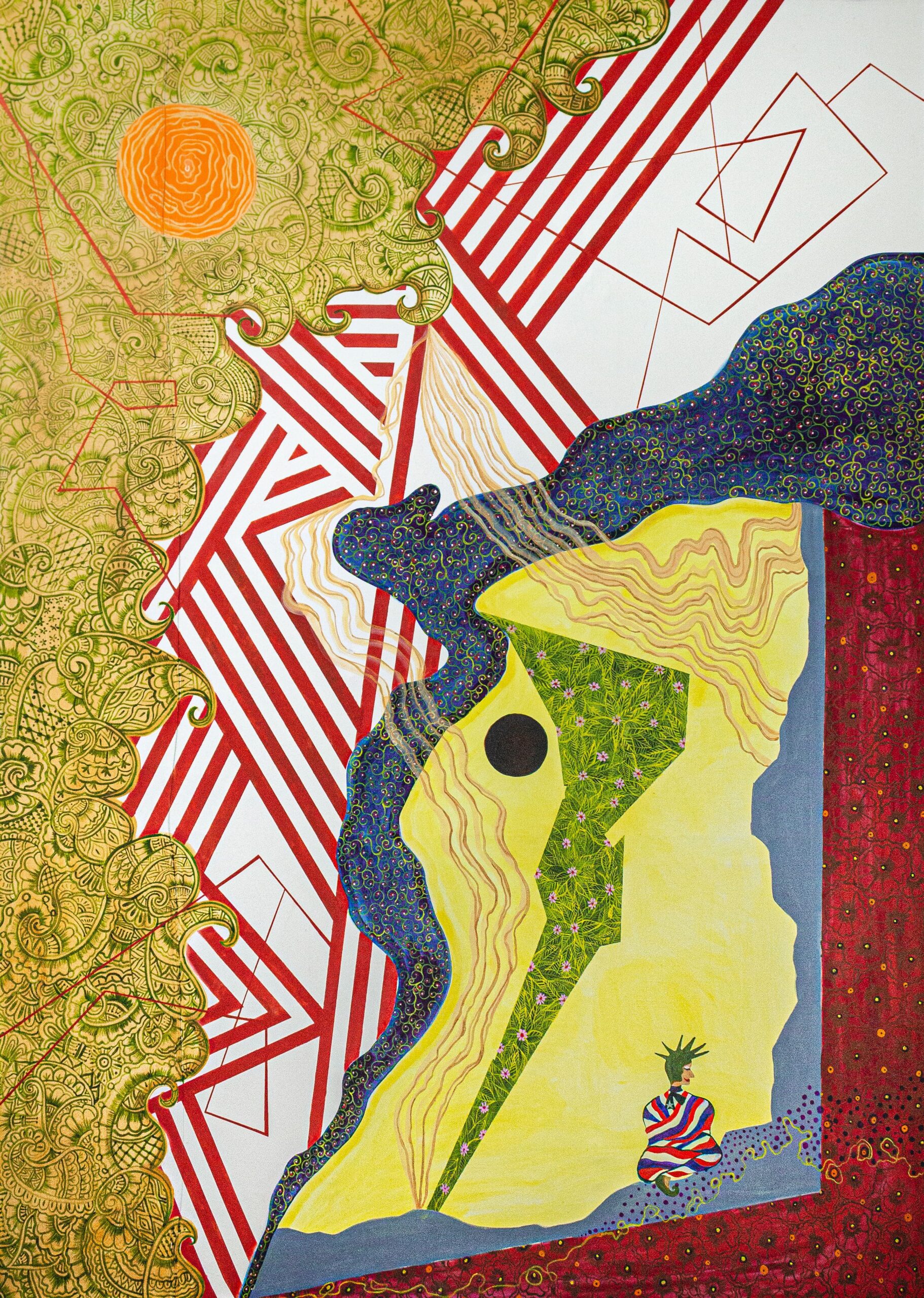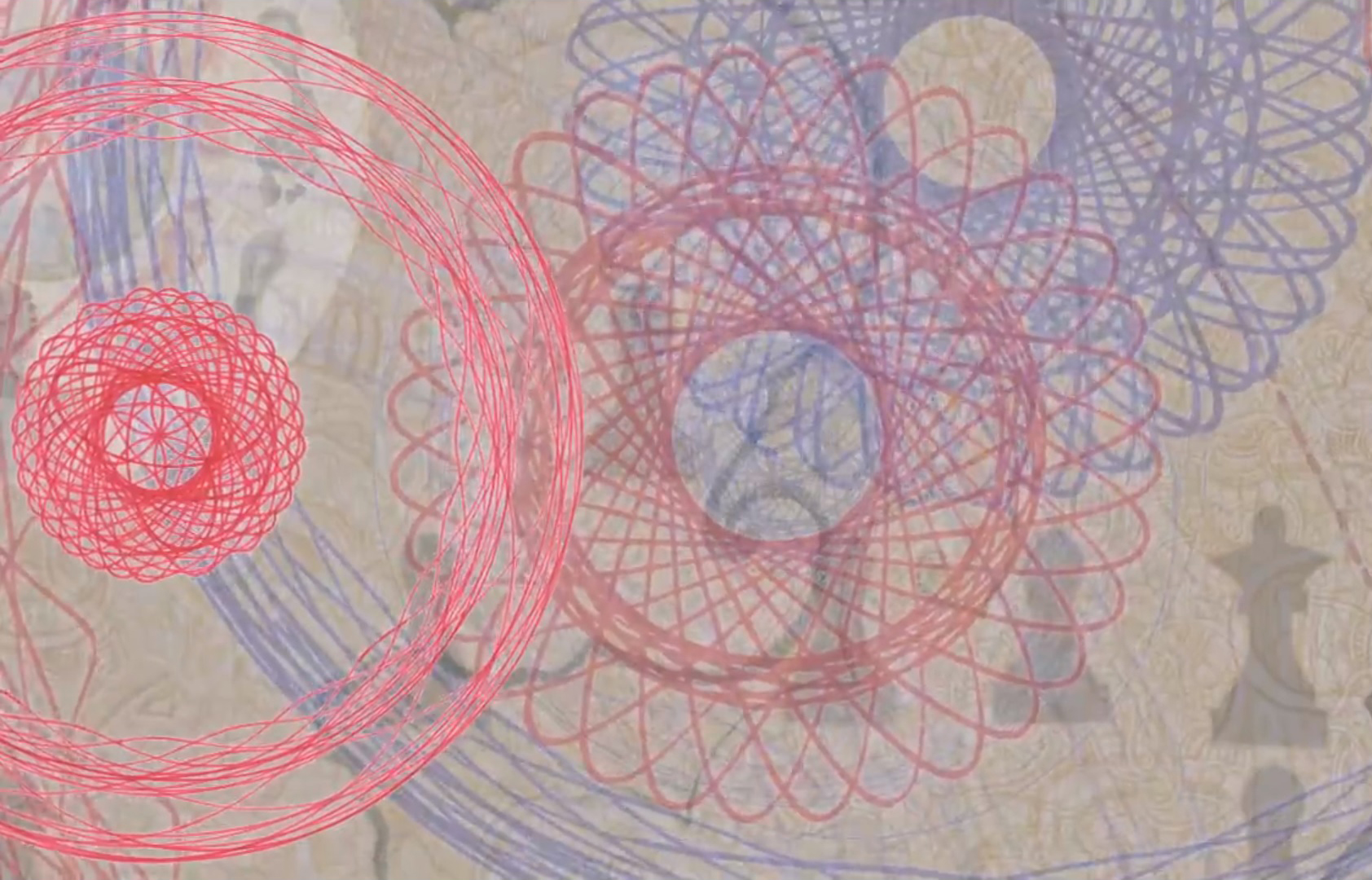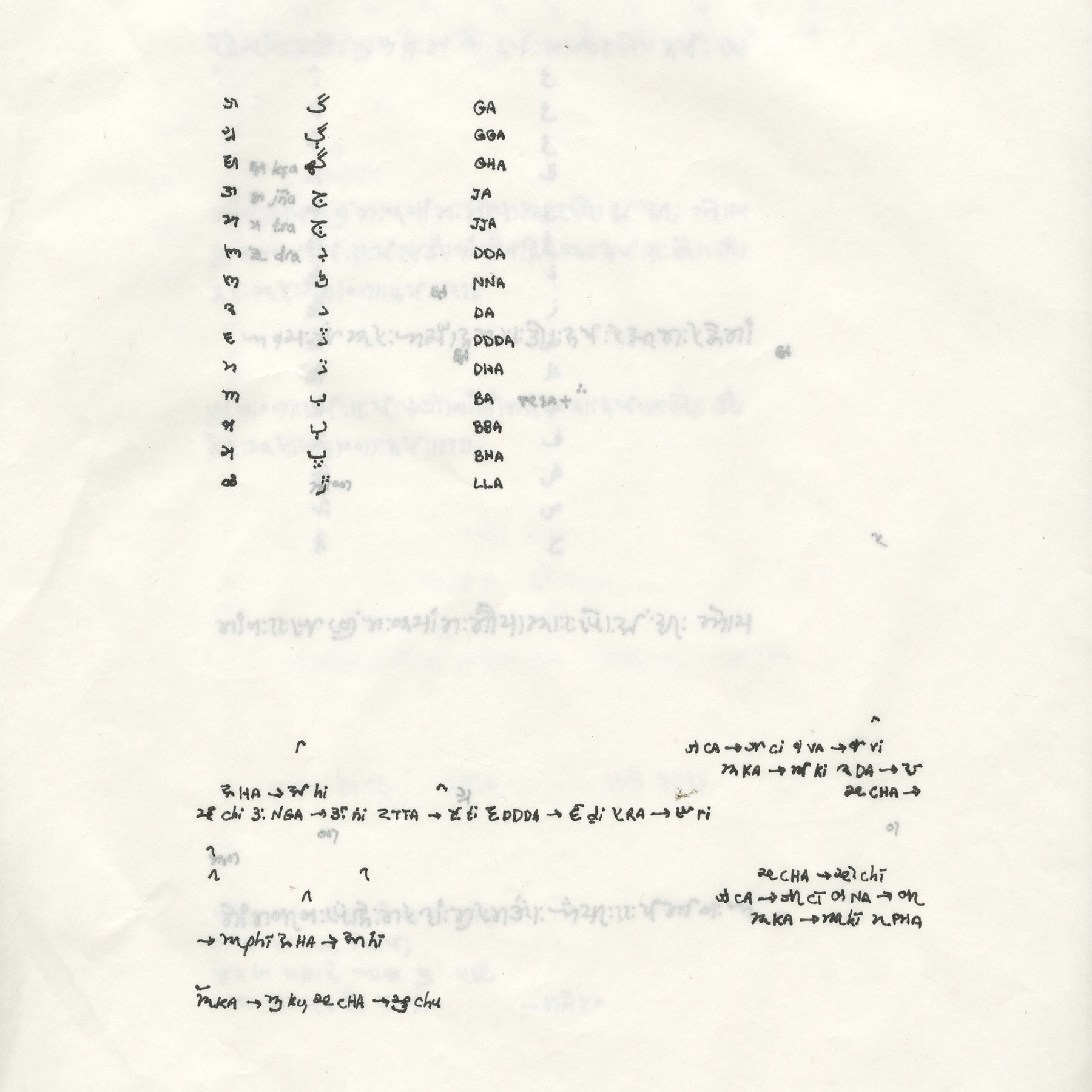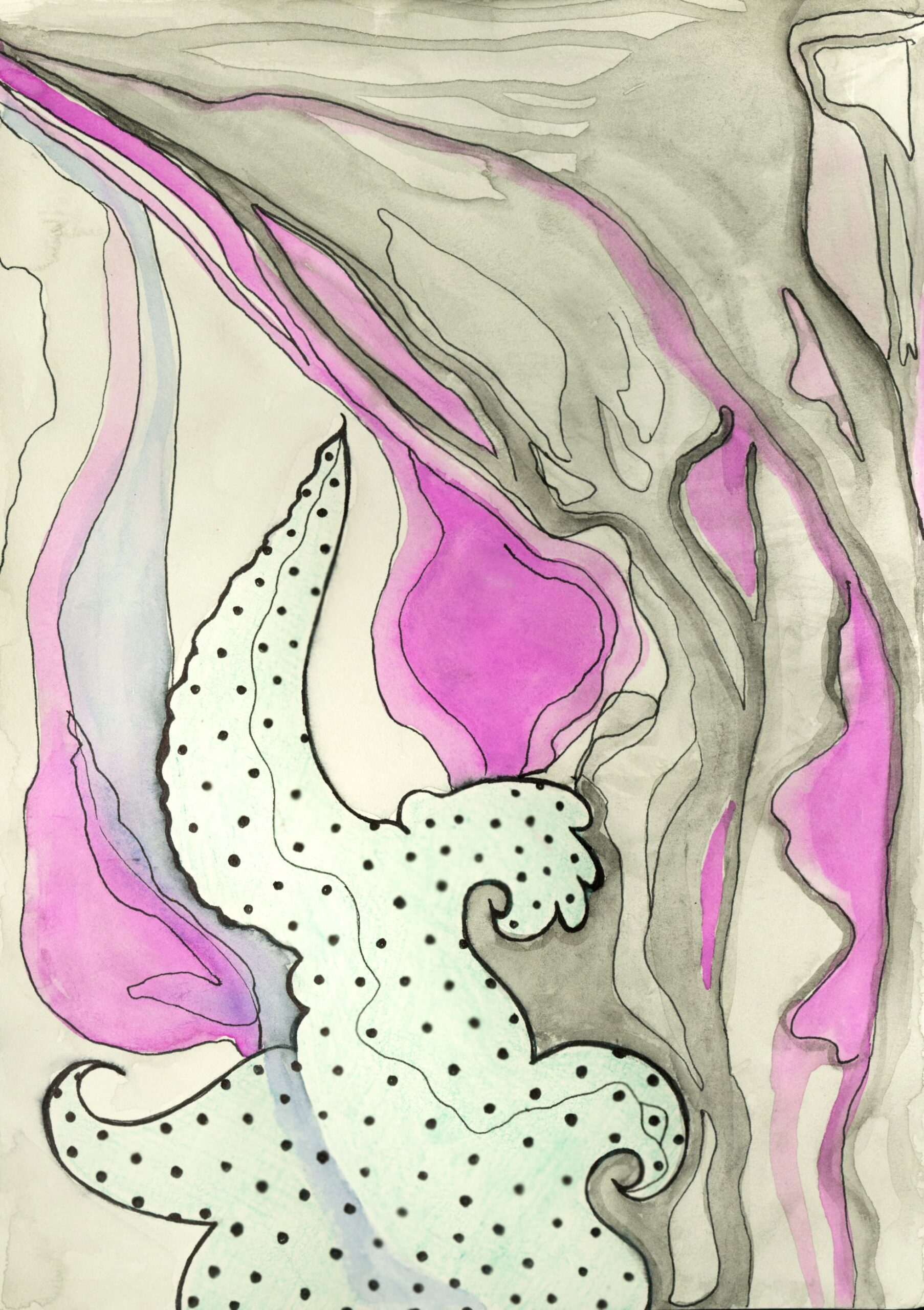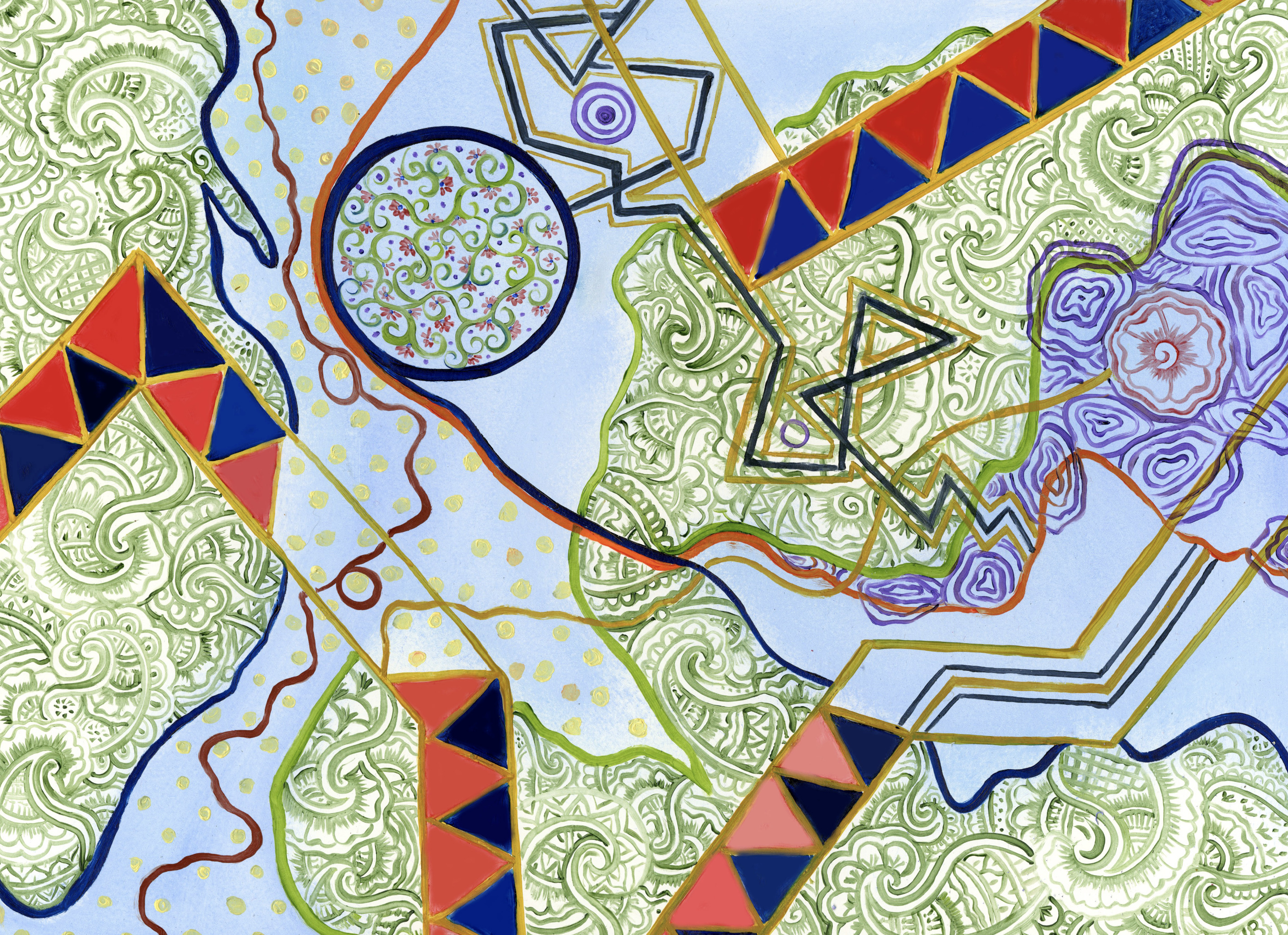
Pattern and Power, first exhibited at Anya Tish Gallery, is a series of paintings that utilize vibrant heritage-based patterns to bridge ordinary moments of modern life with concepts of philosophy, history, and storytelling. This particular collection of paintings associates 10th-16th-century poetic fables with mundane moments from contemporary life. Each painting is adorned with historically significant patterns influenced by Asian and American textile cultures, creating a narrative experience where decorative elements actively participate in the storytelling process.
The paintings delve into the visual possibilities that arise when tales like “The Case of the Animals versus Man” by Ikhwan al-Safa unfold in the present day. It explores possible relationships that can form between literary masterpieces originating from eastern oral traditions and the current visual art space. Traditionally, these fables often contained themes such as caring for nature, questioning social power structures, and combating the dissemination of falsehoods. The oeuvre examines how medieval fables from the continent of Asia continue to convey wisdom that transcends its cultural and geographical origins and remains relevant curiosities to this day.













